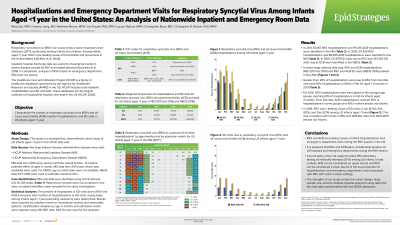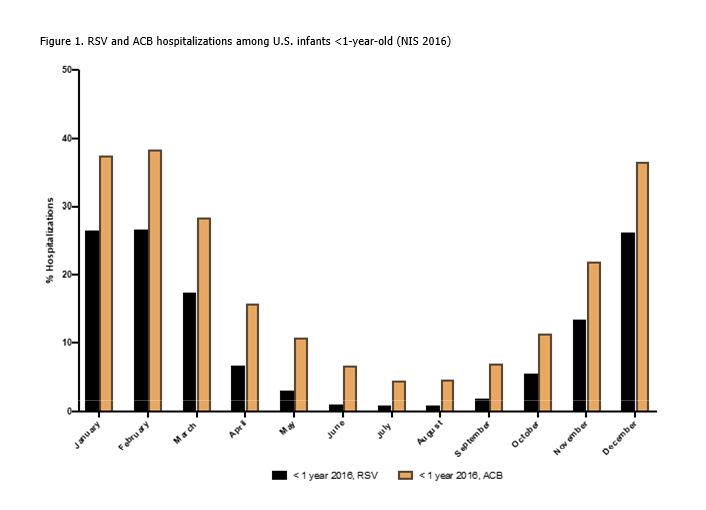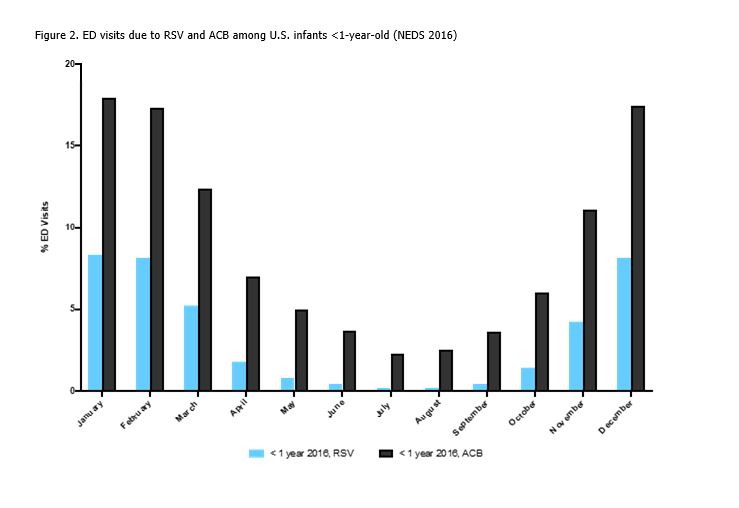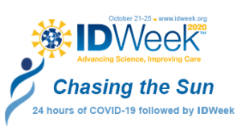Category: Respiratory Infections - Viral
Poster Session: Respiratory Infections - Viral
1508 - Hospitalizations and Emergency Department Visits for Respiratory Syncytial Virus Among Infants Aged < 1 year in the United States: An Analysis of Nationwide Inpatient and Emergency Room Data


Mina Suh
Senior Epidemiologist
Epidstrategies
Mission Viejo, CaliforniaDisclosure: EpidStrategies (Employee)
- XJ
Xiaohui Jiang
Senior Statistician
EpidStrategies, A Division of ToxStrategies, Inc.
Rockville, MDDisclosure: EpidStrategies (Employee)
- NM
Naimisha Movva
Epidemiologist II
Epidstrategies
Rockville, MarylandDisclosure: I do not have any relevant financial / non-financial relationships with any proprietary interests.
- JF
Joh Frysek
Principal Epidemiologist/Practive Director
Epidstrategies
Rockville, MarylandDisclosure: I do not have any relevant financial / non-financial relationships with any proprietary interests.
- LB
Lauren Bylsma
Epidemiologist
Epidstrategies
Ann Arbor, MichiganDisclosure: I do not have any relevant financial / non-financial relationships with any proprietary interests.
- CR
Christopher Rizzo
Senior Medical Director
Sanofi
Swiftwater, PennsylvaniaDisclosure: I do not have any relevant financial / non-financial relationships with any proprietary interests.

Christopher B. Nelson
Associate Vice President
Sanofi
Swiftwater, PennsylvaniaDisclosure: I do not have any relevant financial / non-financial relationships with any proprietary interests.
Presenting Author(s)
Co-Author(s)
Background:
Respiratory syncytial virus (RSV) is a common cause of illness and hospitalization for infants and children globally. The objective of this study was to characterize the burden of RSV and all-cause bronchiolitis (ACB) inpatient hospitalizations and emergency room department (ED) visits in U.S. infants aged < 1 year with the most recent years of data available. |
 Figure 2. ED visits due to RSV and ACB among US infants < 1 year old (NEDS 2016)
Figure 2. ED visits due to RSV and ACB among US infants < 1 year old (NEDS 2016)
Methods:
The National (Nationwide) Inpatient Sample (NIS) and the Nationwide Emergency Department Sample (NEDS), which are large national publicly available all-payer databases in the U.S., were used to estimate the burden of RSV in 2016 based on ICD-9 and 10 codes. The proportions of hospitalizations or ED visits due to RSV in infants aged < 1 year were quantified. Due to the potential of missing RSV encounters based on coding practices, ACB was also evaluated. Based on availability of variables and data recency, 2011 NIS data were used to describe RSV burden by age in months. Sensitivity analyses were conducted with NIS and NEDS data from other years (2011-2015). |
Results: A clear seasonal pattern was observed for RSV hospitalizations and RSV ED visits with a peak in December-February and a trough in June-August in 2016. During the RSV season and peak months, RSV was a leading cause of hospitalization (12065/45490=27% in Jan and 12050/45080=27% in Feb) and ED visits (26423/316709=8% in Jan and 24721/306397=8% in Feb)) among U.S. infants under 1 year of age. Similar patterns were seen for ACB in 2016 (38% hospitalization and 17-18% ED visits in Jan and Feb) and for RSV and ACB in the other years. For the inpatient setting in 2011, RSV hospitalizations were the highest among the youngest patients (except those aged < 1 month) and decreased with age during the RSV season and peak months.
Conclusion:
These results show that during the RSV season, RSV and ACB were a leading cause of hospitalization and ED visit among US infants under 1 year of age. Current policy does not support routine RSV testing of clinical lower respiratory tract infections (LRTIs) among infants. In that context, as an approximation of RSV LRTI visits in each setting, ACB can be considered an upper bound and RSV can be considered a lower bound of the true proportion of hospital encounters associated with RSV in these settings.. |

